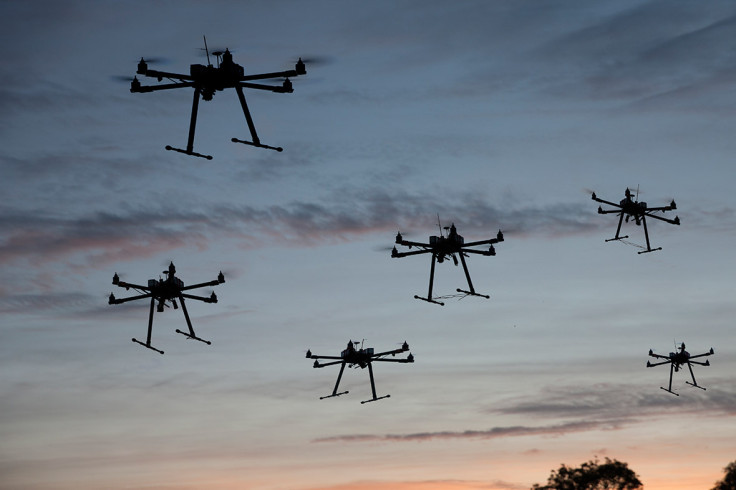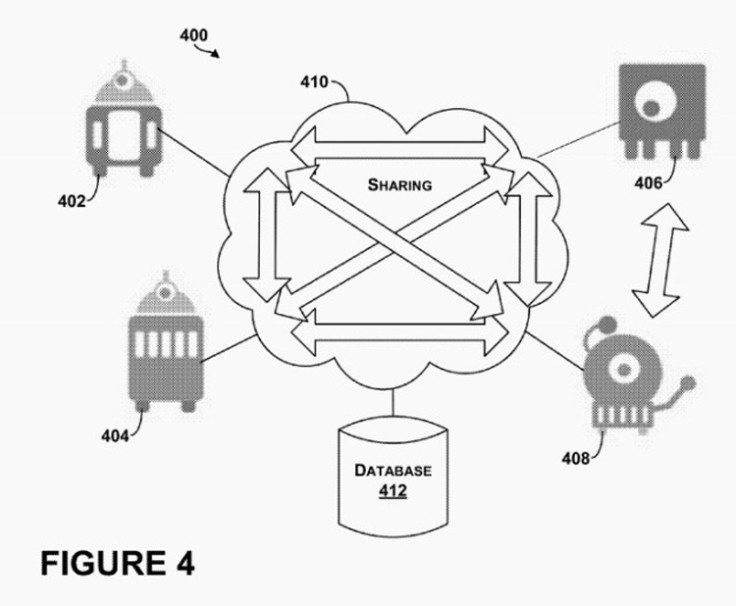Google robot army and military drone swarms: UAVs may replace people in the theatre of war

If you thought that having helicopter drones flying around delivering packages was a scary concept, then you won't be very happy to learn that the US military is seriously considering enlisting the help of tiny robot quadcopter drones in warfare.
The US Navy is now testing a cannon system that launches 30 small robot drones into the air in less than a minute. The drones are able to fly in formation for 90 minutes in order to complete missions and are designed to overwhelm an adversary.
Google is also keen to get involved in swarm robotics - on 14 April, the US Patent and Trademark Office granted Google a patent that allows it to link together and control a large group of robots using the cloud, with the intent of having the robots work together to complete tasks.
While we don't know what Google plans to do with its swarming patent, the US Navy's tests could be part of a rising trend. According to a new report by the Center for New American Security, the US military is seeking to transform and sustain "American military technological dominance" even though the increased military spending is now buying less and less as the years go by.
"Today the US military faces a pernicious cycle of ever rising platform costs and shrinking quantities. As a result, the number of combat ships and aircraft in the US inventory has steadily declined, even during periods of significant growth in defence spending," author Paul Scharre writes.
"Adversaries can concentrate their weapons, which are becoming increasingly accurate and capable at ever-longer ranges, on the relatively small number of US ships and bases, overwhelming their defences."
Cutting military intelligence costs by using UAVs
To that end, the US government is now looking towards unmanned aerial systems or vehicles (UAS / UAV), with multiple nano drones flying in swarms in order to gather large amounts of intelligence quickly and effectively without putting humans at risk.
The small drones are very cheap to purchase, and the military will be able to cut costs as older warships and aircraft don't have to be upgraded as much or put out to pasture as they become obsolete, if the drones are there to handle the intelligence aspects.
"Uninhabited systems can help bring mass back to the fight by augmenting human-inhabited combat systems with large numbers of lower cost uninhabited systems to expand the number of sensors and shooters in the fight," said Scharre.
"Because they can take more risk without a human onboard, uninhabited systems can balance survivability against cost, affording the ability to procure larger numbers of systems."
However, Scharre does caution that the effects of deploying drones on the battlefield could create a new type of warfare phenomena.
Should drones be used in warfare?

"While increased automation may have tactical benefits in allowing faster reaction times to enemy actions, it could also have strategic consequences if the speed of action on the battlefield eclipses the speed of decision-making for policymakers," he writes.
"Increased autonomy in the use of force raises the dangerous spectre of 'flash wars' initiated by autonomous systems interacting on the battlefield in ways that may be unpredictable.
"While militaries will need to embrace automation for some purposes, humans must also be kept in the loop on the most critical decisions, particularly those that involve the use of force or movements and actions that could potentially be escalatory in a crisis."
In January 2015, attendees at a military technology conference held in Virginia, which was open to civilians but not the press, reported that the Department of Homeland Security, the US military and the Federal Aviation Administration (FAA) were discussing the possibility of arming helicopter drones with semi-automatic weapons.
US government officials played videos showing an exercise where a fleet of UAVs worth $5,000 (£3,227.47) were pitted against a convoy of armoured vehicles, with the result showing that the drones won.
UN meeting to debate "killer robots" again
Another sign that military UAVs could soon be making an appearance is the fact it has the United Nations worried. The body is meeting in Geneva from 13-17 April to discuss developments in lethal autonomous weapons systems since its debate on killer robots in May 2014.
Experts in law, robotics, artificial intelligence and science will gather to share research on the current developments in UAVs being used both for commercial purposes as well as by civilians. The military will also be given the chance to provide a rationale as to why it is important for there to be increasing autonomy in weapons systems.
Finally, the experts will be discussing a possible Code of Conduct, as well as regulations, restrictions and prohibitions to be implemented to police these systems.
© Copyright IBTimes 2025. All rights reserved.






















